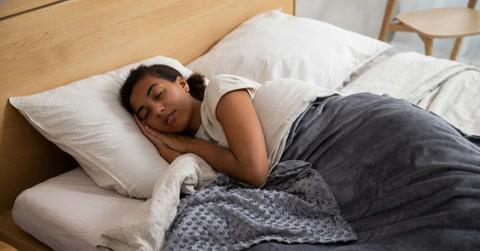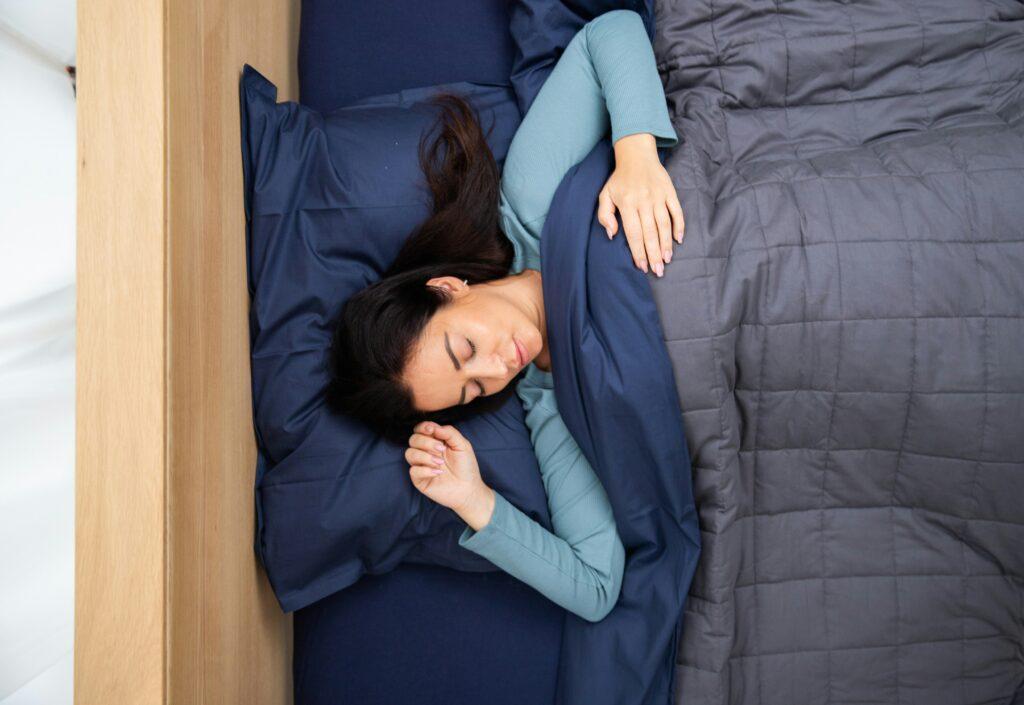How To Sleepmaxx Without Stressing Out: A Realistic Guide For Busy Women

Photo by Unsplash
You’ve likely seen mentions of “sleepmaxxing” on social media, where the hashtag has amassed millions of views. The trend, which took off in late 2024, reflects a growing awareness that sleep isn’t a luxury—it’s essential.
It centers on optimizing sleep quality and duration through strategies, tools, and habits. But what does sleepmaxxing entail, and does it actually work?
What Is Sleepmaxxing?
Dr. Meeta Singh, a board-certified physician and psychiatrist concentrated in the applied science of sleep, says that sleepmaxxing is an intensive approach to sleep where people are trying to maximize both the quality and efficiency of their sleep. It goes above and beyond traditional sleep hygiene when people look at the areas surrounding their sleep, such as the environment, routine, or habits, and try to improve them.
To explain the difference between traditional sleep hygiene and this new approach, Nishi Bhopal, MD, sleep physician and founder of Pacific Integrative Psychiatry, offers a helpful metaphor.
“The difference is that sleep hygiene is like basic car maintenance – changing the oil, checking the tires, etc., which is essential for keeping things running smoothly,” Nishi said. “Sleepmaxxing, on the other hand, is about fine-tuning for high performance, using strategies like precise light exposure, supplements, and sleep tracking.”

Photo by Unsplash
The Science Behind Sleepmaxxing
Solid scientific evidence supports certain sleep strategies in improving sleep quality, such as the impact of daytime light exposure, the role of temperature, and the importance of consistent routines. Both Nishi and Meeta said these aspects of sleepmaxxing are valuable.
Nishi also points out that tech tools like wearables can be helpful if they are used as supports rather than metrics to live by. But, she cautions that not every sleep-friendly product lives up to the hype, and the most important thing you can do is learn to listen to your body.
“No amount of tracking or gadgets can replace your own awareness of how you feel” she said. “The key is to focus on evidence-based strategies and avoid getting caught up in gimmicks or over-relying on tech, especially if it leads to more stress about sleep.”
Ironically, obsessing over ‘perfect sleep’ can sabotage the very rest you’re trying to improve. This can even lead to orthosomnia, a sleep disorder caused by an unhealthy obsession with getting ideal sleep.
These core strategies — light, temperature, and routine — are what truly move the needle when it comes to better sleep.
Sleepmaxxing In A Healthy Way
For busy women who work, have kids, travel, and so on, Meeta said the primary goal should be focusing on simple habits that lead to healthy sleep. Here are her top suggestions:
- Keep a consistent sleep schedule – Go to bed and wake up at the same time every day (within an hour), even on weekends.
- Get natural light in the morning – Daylight helps regulate your circadian rhythm.
- Wind down without screens – Avoid devices at least 30–60 minutes before bed. Set a phone alarm if you need a reminder.
- Ease into sleep – Try journaling, a warm shower, or quiet reading before bed.
- Don’t force it – Only get in bed when you’re actually sleepy.
“You wouldn’t sit at the dining table waiting to get hungry. In the same vein, don’t go to bed and wait to get tired,” Meeta said.

Photo by Unsplash
Nishi said the most effective sleepmaxxing strategies are the ones that fit into real life. She agrees that consistency, morning light exposure, and a wind-down routine that feels relaxing instead of a checklist are things to strive for. She adds that having strategic caffeine timing, movement during the day, and setting boundaries around work and screen time can help make a difference in energy and focus. And if you decide to use a wearable like the Oura ring for valuable insights, take the data with a grain of salt.
“Sleep staging isn’t necessarily accurate, and if you ever notice yourself getting too fixated on the metrics, take a break from tracking,” Nishi said. “The goal should be optimizing sleep in a way that enhances life, not adding another layer of pressure.”
Sleep Like A Boss
The key to a sleep-friendly routine in a busy lifestyle is keeping it simple and flexible. Aim for consistency with your wake-up time, get natural light in the morning, stay active during the day, and have an evening wind-down routine that adds to your evening, not your stress.
“It’s also important to have a runway at the end of the day to wind down before bed, just like you wouldn’t drive 60 mph and slam on the brakes to park in the garage,” Nishi said. “Small habits, like dimming lights an hour before bed, setting a tech curfew, or even just changing into your PJs to signal the transition to sleep, can make a big difference. And don’t stress if every night isn’t ‘perfect.’ Good sleep is about patterns over time, not a single night’s data.”
Sleepmaxxing isn’t about perfection — it’s about consistency, intention, and protecting your energy so you can show up fully for your goals.






